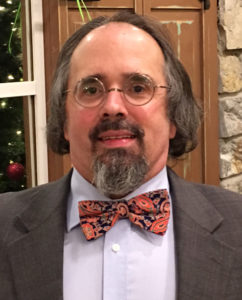Approximately 50,000 students with Autism Spectrum Disorder (ASD) will turn 18 (Autism Speaks, 2012) with many high functioning ASD students completing high school in anticipation of enrolling in, and graduating from postsecondary institutions (Camarena & Sarigiani, 2009; Chiang, Cheung, Hickson, Xiang, & Tsai, 2012; Cox, Mintz, Locks, Thompson, Anderson, Morgan, Edlestein, & Wolz, 2015). However, only 34.7 percent of high functioning ASD (HFASD) students will attempt college within 6 years of having graduated (Shattuck, Narendorf, Cooper, Sterzing, Wagner, and Taylor, 2012; Cox et al., 2015). Despite their academic preparedness, deficits in social reciprocity, communication, and stereotypic behaviors leave them isolated, ostracized, and misunderstood.

Stephen M. Tomczak, PhD, LMSW

Julie Piepenbring, PhD, LCSW,

Laura Albee, MA, BCBA
Research suggests parents remain present in the lives of their adult child with autism (Goode, Howlin, & Rutter, 1999; Howlin, Mawhood, and Rutter, 2000; Mawhood, Howlin, and Rutter, 2000; Szatmari, Bartolucci, Bremner, Bond, and Rich, 1989; Tantam, 1991; and Balfe and Tantum, 2010), with many reporting either living with their parents, or residing in supported residential settings (Greiert, 2016). Few described dating, having a significant other, or having intimate social experiences (Goode, Howlin, & Rutter, 1999; Howlin, Mawhood, & Rutter, 2000; Mawhood, Howlin, & Rutter, 2000; Szatmari et al., 1989; Tantam, 1991; Greiert, 2016), and almost half of the adult participants according to Goode, Howlin, and Rutter (1999) reported having no friends (Greiert, 2016).
Social scientists have identified four distinct features including social isolation (the relative absence of social relationships); social integration (informal involvement with a spouse / partner, and the formal affiliation with religious, volunteer, or community groups); quality of relationships (emotional support of a significant other, and the stress impacting the relationship); and social networks (the constellation of associations surrounding the individual) as the impetus for overall health and well-being (Smith & Christakis, 2008; Umberson & Montez, 2010). By nature of their autism, including the absence of understanding the social rules of engagement associated with dating, romantic relationships, or everyday social exchanges, many individuals with ASD are put at a disadvantage. They often misinterpret the emotions associated with attraction and rejection, leaving them susceptible to committing an inappropriate act without the realization that what they are doing is wrong (Ray, Marks, & Bray-Garretson, 2004; Travers & Tincani, 2010). Unlike neuro-typicals who gain much of their knowledge through peer engagement in naturalistic settings, individuals with ASD have led more restrictive lives. While there are many benefits to integrating HFASD individuals with neurotypical counterparts, many remain socially excluded due to their eccentricities and thus, there is no assurance that skills learned can be organically applied and generalized across people, places, and situations.
Reframing Autism
Research continues to pathologize and disempower individuals with ASD by magnifying biologically based behaviors as problematic and in need of management (Gougeon, 2010). Hellemans et al., (2007) suggests that 29 percent of individuals with autism exhibit severe sexually problematic behaviors (Hellemans et al., 2007; Gougeon, 2010). Some of the atypical behaviors noted in the Hellemans et al., (2007) sampling included paraphilia, which one individual exhibited towards young girls (Hellemans et al., 2007; Gougeon, 2010). Other actions deemed as “problematic autistic behaviors” included public masturbation, and attraction to particularities including breasts, lips, eyes, and legs (Hellemans et al., 2007; Gougeon, 2010). With exception to paraphilia, the behaviors expressed as overt and problematic all fell within “normal” range when comparing similar behaviors exhibited by neuro-typicals (Love, 2004; Gougeon, 2010). In fact, many people regardless of disability and sexual orientation are attracted to the physical attributes of another including one’s eyes, legs, hair, and even scent (Gougeon, 2010). However, for those demonstrating poor social acuity, impulse control, and self-expression navigating society’s “hidden curriculum” becomes overwhelming and problematic. Some may be unjustly targeted due to the peculiarities associated with their diagnostic profile.
Parents, educators, and community partners can help reframe public perception by promoting education and awareness. Gougeon (2010) defines reframing as a necessary shift in thinking in which a peculiarity is better defined as a skill deficit, thereby illuminating the relevant social barriers and stigma associated with autism, while alleviating the identified deficits with appropriate strategies and skills. Reframing should address “counterfeit deviance” – which is defined as behaviors that appear divergent upon initial observation but can be attributed to factors other than aberrant sexual arousal (Hingsburger, Griffiths, & Quinsey, 1991) – by re-conceptualizing these behaviors as being symptomatic of a social communication disorder (Gougeon, 2010).
Therefore, preparing HFASD students for campus living is essential. Providers and families should meet with all relevant parties to familiarize them with the diagnostic features of autism. Behaviors associated with ASD are often misinterpreted, and without clarification could impact an individual’s ability to receive fair and equitable treatment when confronted by campus police and administrators. The Individual Education Plan (IEP) should follow the student into postsecondary institutions. The IEP ensures that all reasonable accommodations will be met in accordance with their respective academic institution. Conversely, the social supports that were once embedded throughout high school are no longer maintained in college. For many HFASD students, the Disability Resource Center (DRC) becomes their lifeline for accessing the necessary resources to promote academic success. However, the DRC is not the most ideal location for social engagement and student community. Furthermore, the DRC is restricted from assisting HFASD students with other relevant campus supports including student housing and financial aid just to name a few. Although research suggests social ties can benefit ones overall health and well-being, social ties can also undermine health and may vary across social groups (Umberson & Montez, 2010). The social and sexual deficits that present in autism may inhibit them from fully integrating into their communities as social and sexual beings manifesting in depression, anxiety, low self-esteem, isolation and other mental health issues (Aylott, 2000; Ozonoff et al, 2005; Gougeon, 2010). Therefore, it is critical to identify resources that encourage positive social ties and promote personal health habits (Umberson & Montez, 2010).
Campuses should consider establishing best practices that can expand beyond the DRC to ensure that every HFASD student can successfully transition to campus life. Recommendations include connecting ASD students with a student mentor, counseling supports, and related groups so that they can develop social ties. Moreover, university residence life offices should accommodate ASD students as many have specific sensory, social, and emotional needs that dorm-life can trigger. Because many individuals with ASD have lead restrictive lives, having a roommate and being asked to cohabitate with someone other than a family member can create extreme anxiety. Dormitory resident assistants need to be sensitive to individuals with ASD including helping them to self-advocate, and communicate on behalf of themselves – especially when conflict arises.
Laura Albee, MA, BCBA, is a Board Certified Behavior Analyst for the Torrington Public School District, Torrington, CT and a MSW Candidate in May 2017 at Southern Connecticut State University. Julie Piepenbring, PhD, LCSW, is Assistant Professor in the Department of Social Work, Stephen Monroe Tomczak, PhD, LMSW, is Associate Professor of Social Welfare Policy and Community Organization, and Esther C. Howe, DSW/PhD, LCSW, is a Professor at Southern Connecticut State University, located in Hartford, CT. For more information, please visit www.southernct.edu/socialwork/.
References
Autism Speaks. (2012). Mounting evidence of critical need for adult transition support. Retrieved on February 11. 2017 from https://www.autismspeaks.org/science/science-news/top-ten-lists/2012/mounting-evidence-critical-need-adult-transition-support
Balfe, M., & Tantum, D. (2010). A descriptive social and health profile of a community sample of adolescents and adults with asperger syndrome. BioMed Council Research Notes, 3, 300.
Camarena, P. M., & Sarigiani, P. A. (2009). Postsecondary educational aspirations of high-functioning adolescents with autism spectrum disorders and their parents. Focus on Autism and Other Developmental Disabilities, 24(2), 115-128.
Chiang, H. M., Cheung, Y. K., Hickson, L., Xiang, R., & Tsai, L. Y. (2012). Predictive factors of participation in postsecondary education for high school leavers with autism. Journal of Autism and Developmental Disorders, 42(5), 685-696.
Cox, B. E., Mintz, A., Locks, T., Thompson, K., Anderson, A., Morgan, L., Edlestein, J., & Wolz, A. (2015). Academic experiences for college students with autism: Identity, disclosure, and accommodations. American Education Research Association, Retrieved on February 11, 2017 from ProQuest.
Goode, S., Howlin, P., & Rutter, M. (1999). A cognitive and behavioral study of outcome in young adults with autism. in preparation.
Gougeon, N. A. (2010). Sexuality and autism: A critical review of selected literature using a social-relational model of disability. American Journal of Sexuality Education. 5, 328-361
Greiert, B. S. (2016). Key components of successful sexuality education for high functioning students with autism spectrum disorder. A Dissertation Presented to the Faculty of the Morgridge College of Education, University of Denver. Retrieved on November 10, 2016 from ProQuest.
Hellemans, H., Colson, K., Verbraeken, C., Vermeiren, R., & Deboutte, D. (2007). Sexual behavior in high-functioning male adolescents and young adults with autism spectrum disorder. Journal of Autism and Developmental Disorders, 37(2), 260-269.
Hingsburger, D., Griffiths, D., & Quinsey, V. (1991). Detecting counterfeit deviance. The Habilitative Mental Healthcare Newsletter, 10(9), 51-54.
Howlin, P., Mawhood, L., & Rutter, M. (2000). Autism and developmental receptive language disorder: A follow up comparison in early adult life. II: Social, behavioral, and psychiatric outcomes. Journal of Child Psychology and Psychiatry, 41(5), 561-578.
Love, B. (2004). United States: Significant unconventional sexual behaviors. D: Paraphilias and unusual sexual practices. In R. T. Francoeur & R. J. Noonan (Eds.), The Continuum Complete International Encyclopedia of Sexuality. New York, NY: Continuum, 1245-1250.
Mawhood, L., Howlin, P., & Rutter, M. (2000). Autism and developmental receptive language disorder – A follow up comparison in early adult life. I: Cognitive and language outcomes. Journal of Child Psychology and Psychiatry, 41(5), 547-559.
Ozonoff, S., Garcia, N., Clark, E., & Lainhart, J. E. (2005). MMPI-2 personality profiles of high functioning adults with autism spectrum disorders. Assessment, 12(1), 86-95.
Ray, F., Marks, C., & Bray-Garretson, H. (2004). Challenges to treating adolescents with asperger’s syndrome who are sexually abusive. Sexual Addiction and Compulsivity. 11. 265-285.
Shattuck, P. T., Narendorf, S. C., Cooper, B., Sterzing, P. R., Wagner, M., & Taylor, J. L. (2012). Postsecondary education and employment among youth with autism spectrum disorder. Pediatrics, 129(6), 1042-1049.
Smith, K. P., & Christakis, N. A. (2008). Social networks and health. Annual Review of Sociology, 34, 405-429.
Szatmari, P., Bartolucci, G., Bremner, R. S., Bond, S., & Rich, S. (1989). A follow up study of high functioning autistic children. Journal of Autism and Developmental Disorders, 19, 213-226.
Tantam, D. (1991). Asperger syndrome in adulthood. in U. FRITH (ed.) Autism and Asperger Syndrome. Cambridge: Cambridge University Press, 147-183.
Travers, J., & Tincani, M. (2010). Sexuality education for individuals with autism spectrum disorders: Critical issues and decision-making guidelines. Education and Training in Autism and Developmental Disabilities, 45(2), 284-293.
Umberson, D., & Montez, J. K. (2010). Social relationships and health: A flashpoint for health policy. Journal of Health and Social Behavior, 51, 554-566.





